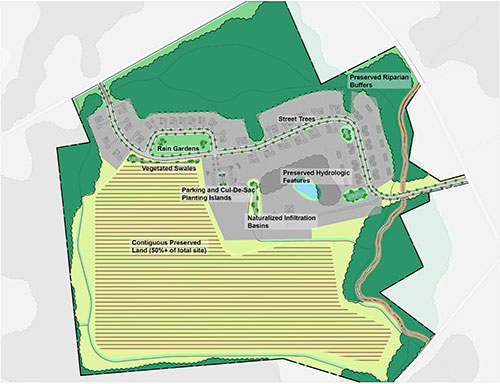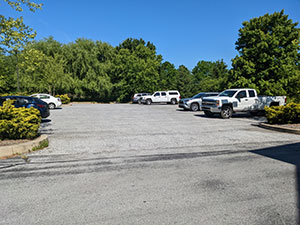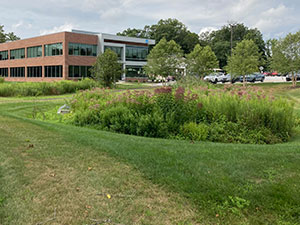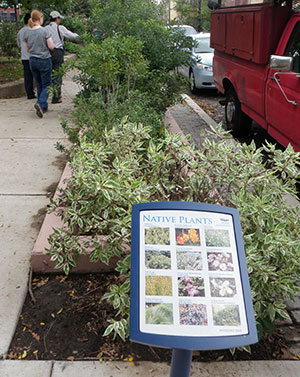Design Elements — Low-Impact Design: Stormwater Facility Design and Placement
Low Impact Design (LID) consists of site design approaches and small-scale stormwater management practices that promote the use of natural systems for infiltration and evapotranspiration. LID addresses the root cause of water quality impairment by managing stormwater as close to the point of generation as possible. LID places significant emphasis on maintaining, mimicking, or improving the natural hydrology of land undergoing development to minimize the generation of stormwater runoff. The main premises of LID are managing storm flows as close to where it is generated as possible, and disconnecting impervious surfaces from each other to distribute the runoff to many smaller green stormwater infrastructure elements such as vegetated channels and bioswales.

View Larger Image
Ordinance Considerations
This process first incorporates the existing natural resources and hydrological features into the overall site design with little or no disruption to these features, and then incorporates low-impact and non-structural BMPs around them, and only then proceeds to incorporate standard BMPs as necessary to achieve peak rate reduction and infiltration. This approach minimizes disturbance of land area, natural features and site hydrology, preserves concentrations of open space, woodlands and environmentally sensitive features, and incorporates non-structural BMPs and low impact development techniques to minimize the usage of traditional structural stormwater facilities.
New design guidance recommends using green infrastructure wherever possible to manage stormwater runoff. These practices include vegetated swales, rain gardens, porous pavement, urban tree canopies, naturalized infiltration basins, and green roofs.
For a thorough discussion on these practices, see Section 304: Site Design Process of Chester County's Model Stormwater Management Ordinance and Chester County's Model Stormwater Ordinance's Appendix B: Conservation Design and Low Impact Development Site Design.
Good Examples
- Troutbeck Farm in Willistown (not yet constructed)
- Ferguson Preserve in Wallace (not yet constructed)




